What is the key to a heaping harvest of mouth-watering, juicy, delightful strawberries? Simply put: the strawberry roots. Healthy strawberry roots are the key to a healthy strawberry plant. Roots are just roots, right? Well, the fine filaments that absorb the needed nutrients from the soil that help each plant set a heavy crop of strawberries are a bit more sophisticated than you might imagine. This article will help you understand the nature and importance of strawberry root systems.
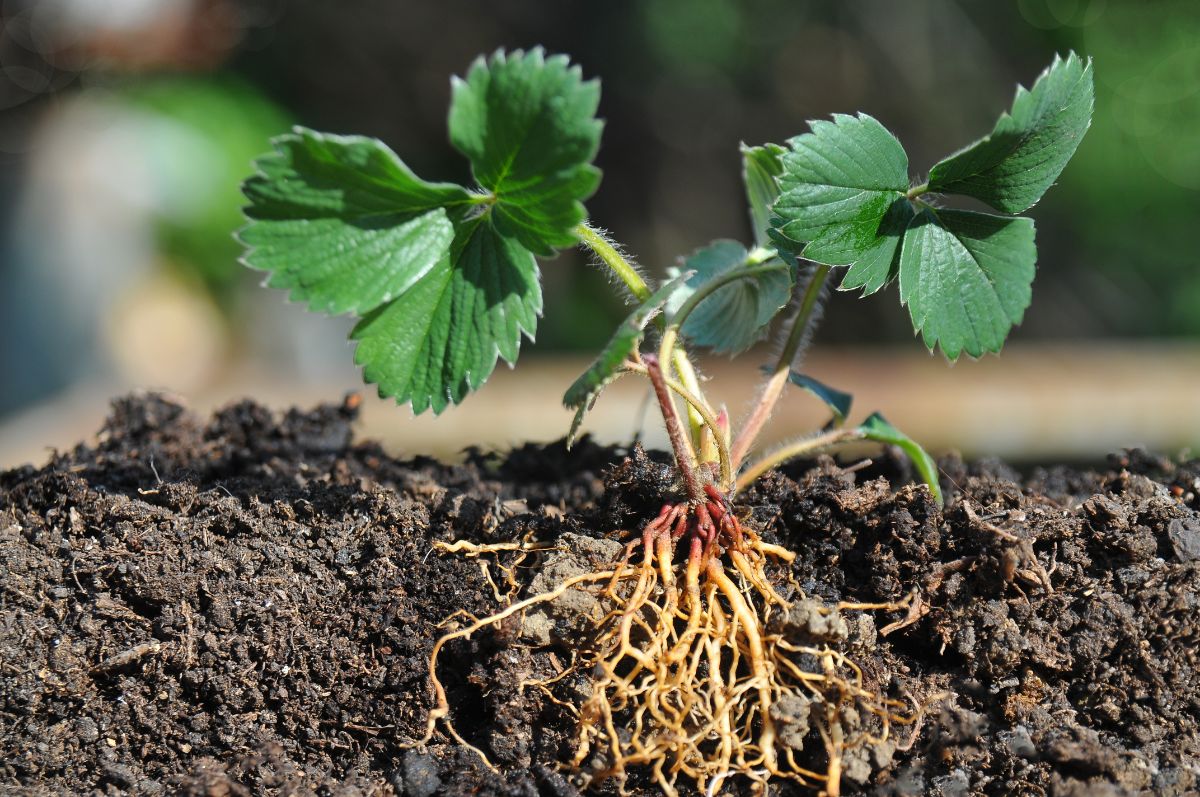
Jump to:
Types of Strawberry Roots
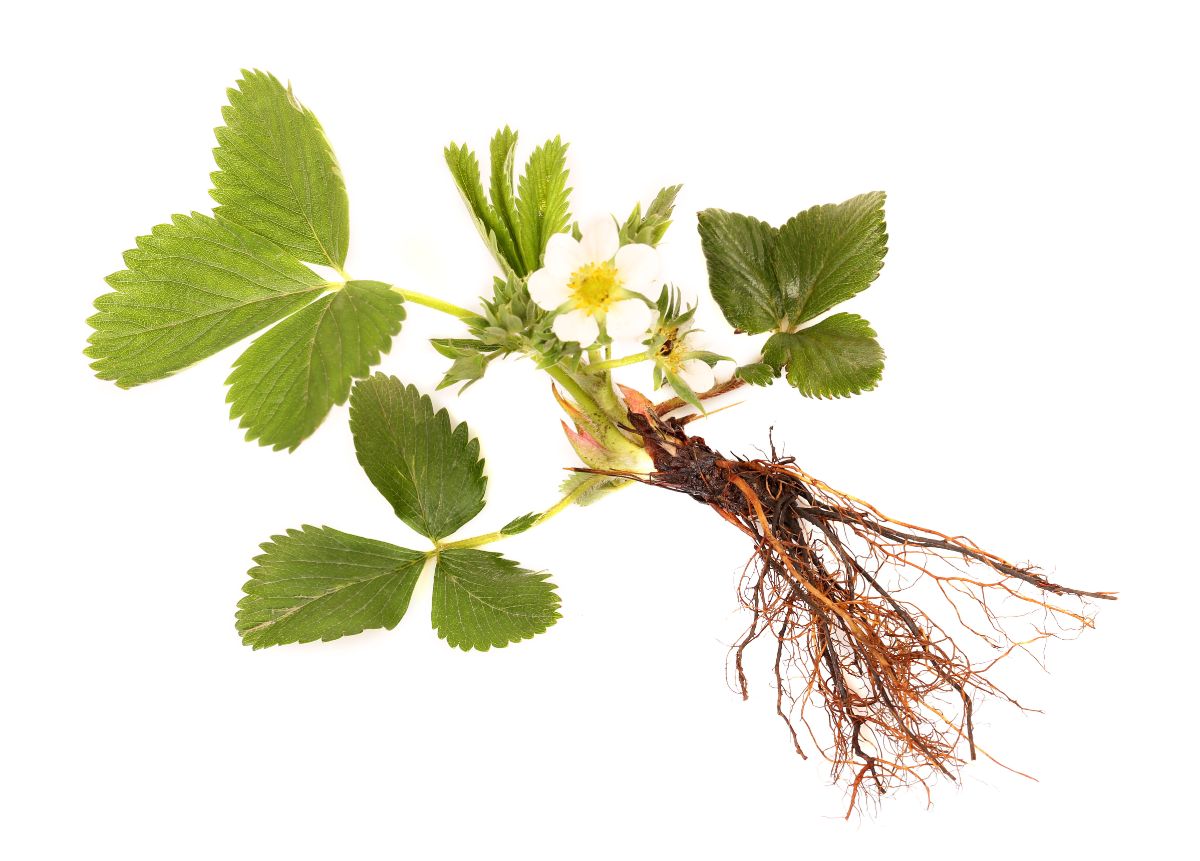
There are two types of strawberry roots: primary roots and secondary roots. Primary roots are the main roots of each strawberry plant. Primary strawberry roots carry absorbed water and nutrients from the soil into the crown of the strawberry plant. These roots are perennial in nature and survive for multiple years.
Secondary strawberry roots are also called “feeder” roots. They are short-lived. A normal lifespan for feeder roots is days to weeks. The secondary strawberry roots are much finer than the primary roots. Consequently, they are damaged very easily. The actual water and nutrient absorption is performed by these roots.
Strawberry Root Production
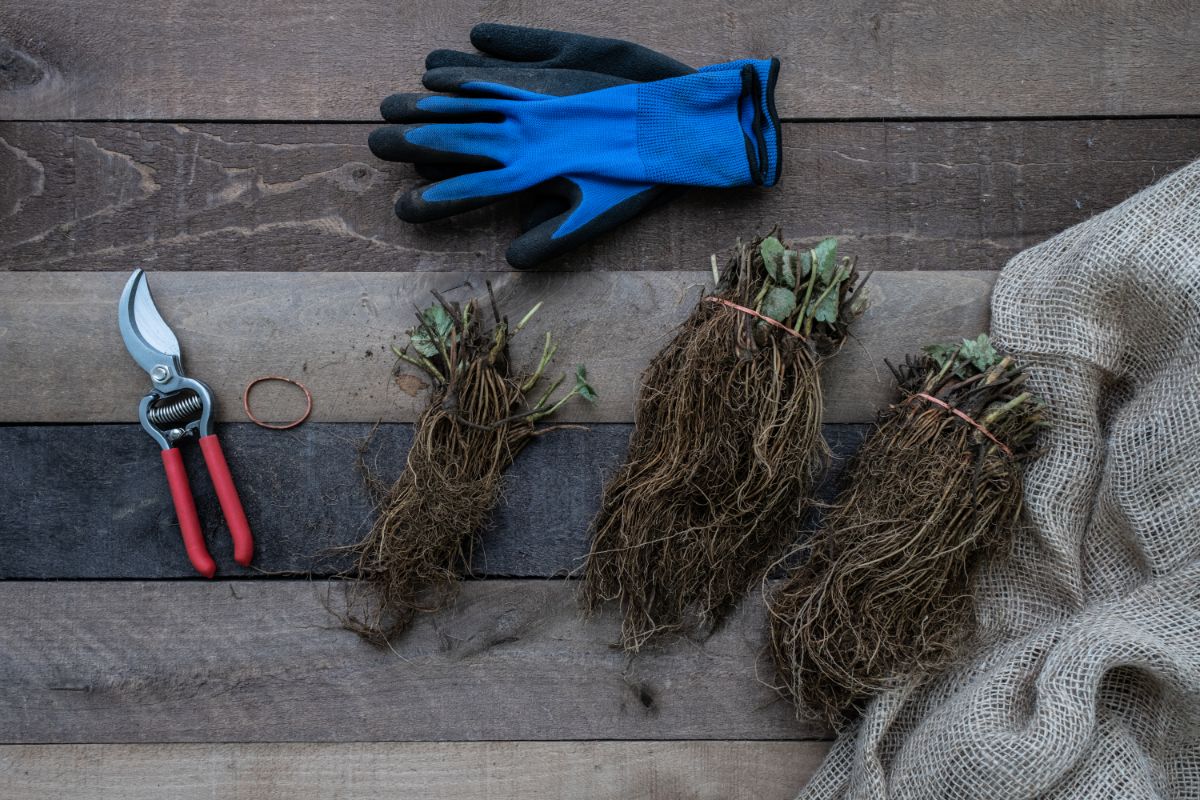
Strawberry roots are produced from the time the ground thaws in late winter/early spring until the ground re-freezes again in the winter. The milder temperatures of spring and fall, however, are the most conducive to the formation of strawberry roots. As you may or may not have heard, it is advantageous to remove the flowers during the first year of a strawberry plant’s life (or the first year after planting a bare-root strawberry plant). The reason for this is all in the roots…
Strawberry roots absorb (secondary/feeder) and transport (primary) nutrients to the crown. The crown is where flower buds form and from where flowers emerge and mature into strawberries. Immature root systems have a difficult time providing all the necessary nutrients to growing strawberries. So, in order to allow the roots (both primary and feeder roots) to develop to a level that can support both the vegetative growth of the strawberry plant and the growing of large strawberries, strawberry roots are more important than fruit during the spring of the year immediately after they have been planted.
Taking Advantage of Strawberry Roots’ Nature
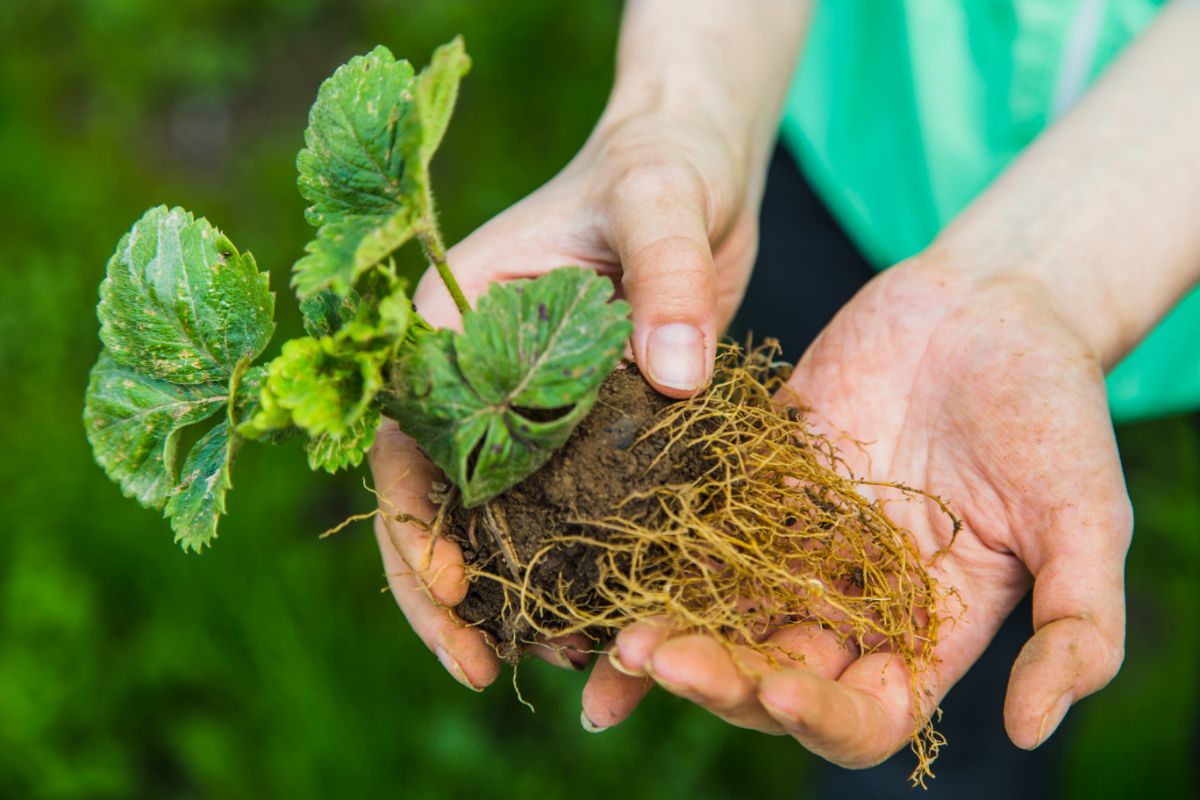
As was mentioned before, strawberry roots grow like crazy in the mild spring and fall temperatures. Leaves will grow during the summer until the temperature hits 86-87 degrees Fahrenheit. At that point, leaf growth will slow (it stops at 32 degrees Fahrenheit). So, in order to get the largest strawberry roots to develop, it is vital to harvest the growing period either in the spring or fall. For those that plan ahead, planting and caring for strawberry plants in the fall is probably the best option as no harvest has to be lost.
It can be a straining psychological duty to snip flowers and forsake the strawberries you are eagerly anticipating. So, I think fall planting is best. By planting in the fall, you give the strawberry plants plenty of time to maximize root development and form the flower buds in the crown that will come forth the following spring and result in a good harvest.
Spring planting is more common than fall planting, however. Gardens are being planned and executed then. Most nurseries have plants for sale in the springtime. So, most people plant in the spring. There is, of course, nothing wrong with that. But, the plants need their little strawberry roots to grow during those mild days. Allowing them to expend much energy into fruit production instead of root production will lower their production capacity greatly. Snipping the flower buds may cost you 3-4 strawberries per plant in year one, but it could cost you many times that per plant over the rest of each plant’s productive years.
Helping Improve Strawberry Root Systems
Strawberry plants produce roots higher up on the crown year after year. In order to maximize primary root production, soil should be added around the crowns of the strawberry plants each year after the primary harvest has been completed (during renovation). Up to an inch of soil should be added to a strawberry bed and around the crowns of the strawberry plants to facilitate this new primary root growth. Be careful to not bury the crowns completely, however. Doing so will likely cause plant damage or death or allow an avenue for pathogenic infection.
Building up the soil around the strawberry crowns can even allow enough primary strawberry roots to form to rejuvenate an entire struggling plant.
Location of Strawberry Roots: Depth
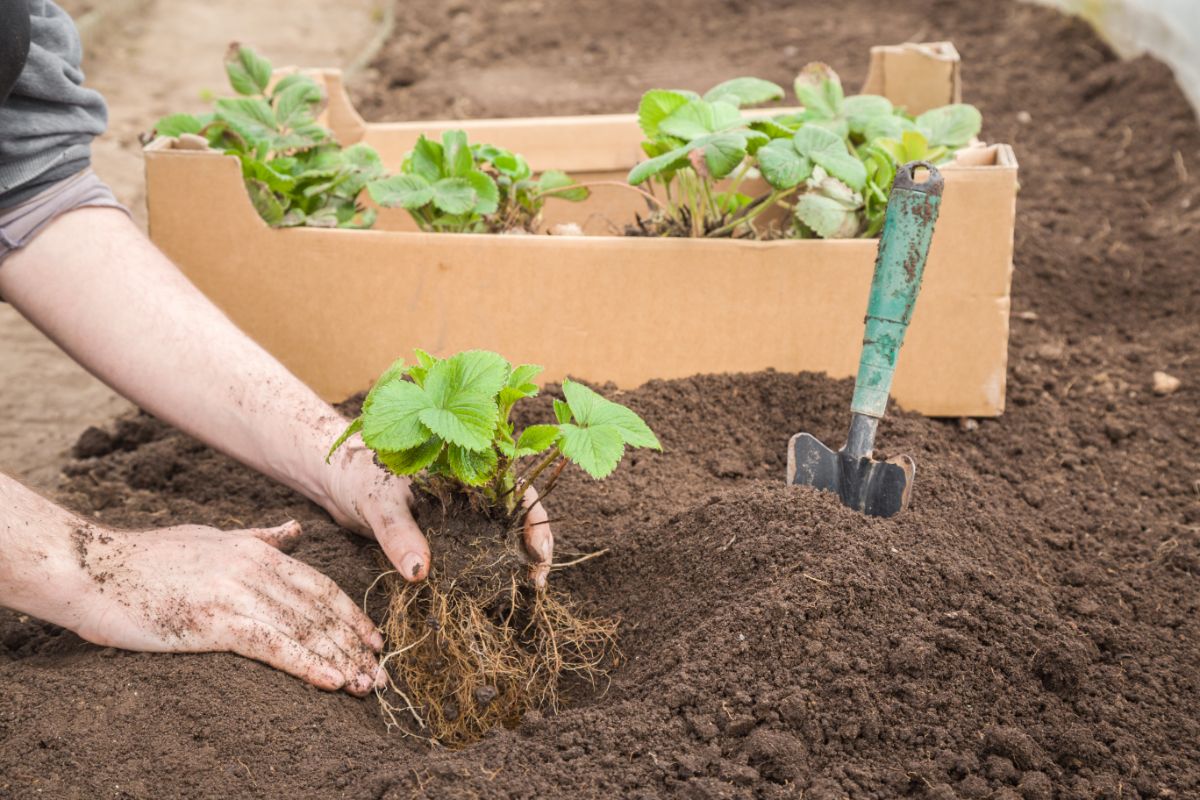
Strawberry plants have very shallow root systems. In heavy soils or clay-rich soils, all of the strawberry roots will be contained in the top 6 inches of soil. In light, sandy soils, they will penetrate to only about 1 foot. Because of this fact, the plants are susceptible to damage if too much or too little water is available. And, excessively salty or ionic conditions can also damage or kill plants. You may want to read the Strawberry Growing Master Manual for in depth help and guidance for maximizing all aspects of growing your own strawberries.
The shallow nature of strawberry roots also puts them into competition with most other plants, especially common weeds. Mulching of some sort is necessary to minimize weeds. And, if you can’t keep them out altogether (who can?!), pulling them by hand is needed to keep the weeds from siphoning critical nutrients and water away from your strawberry plants.
Adventitious Strawberry Roots
One amazing feature of the humble strawberry plant is its ability to clone itself by means of runners. These runners are properly called “stolons” and emerge from the crown like other leaves and flowers. However, they are special. They “run” away from the plant and eventually develop a node with a tiny adventitious root tip on the bottom. This special type of primary root will grow downward into the soil upon contact. Once the adventitious root grows downward and feeder roots develop sufficiently to support the daughter plant, the connection to the mother plant will become brittle, die, and break. This separation results in a completely new, yet genetically identical, plant! These plants can be transplanted elsewhere or allowed to stay to create a matted row.
Strawberry Roots: Conclusion
The overall character of the plant is determined by the strawberry roots. As the roots go, so goes the planting. It is important to understand where roots are and how they function in order to enjoy maximum harvests. So, give the plants the tender loving care that they need to thrive, and help them develop the best possible root systems for the best possible harvests for years to come!
And, as a side note, the “strawberry roots” that are sold by some nurseries aren’t only strawberry roots in the truest sense. They are more accurately labeled as dormant bare-root strawberry crowns or dormant strawberry plants. These are typically shipped without dirt in some sort of plastic to prevent moisture loss. They are complete plants (just missing leaves) in a dormant state.








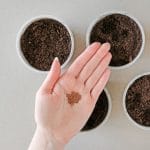

Vasko says
If I grow strawberries in a plastic pipe, can the soil get so hot that the root dies?
Mary Ward says
That is a possibility. It’s something to think about if you live in a very hot area. It is also possible that they will live, but if the roots are too hot they might not produce berries. Also, make sure the pipes drain well. Check out this article for more information; the issues are mostly the same: https://strawberryplants.org/growing-strawberries-in-gutters/
Judy w says
If soil is added to the crown will the plants continue to produce fruit long after year 4 or 5? Or should they still be pulled out and replaced at that point?
Emolyn Dihe says
Want to know more about the functions of different parts of the strawberry plants..